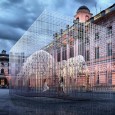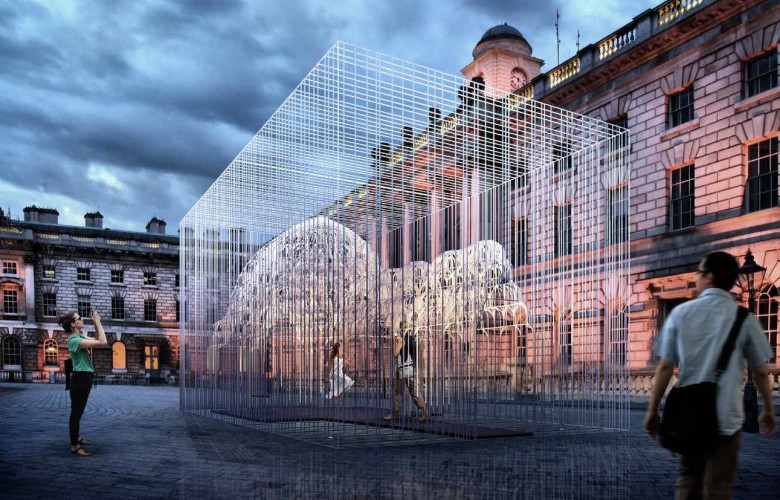news
طراحی پاویون ایران در دو سالانه طراحی لندن




En
Kamvari architects a young architecture practice selected to design the Iran pavilion at the prestigious London design biennale
Project director: Omid Kamvari
Design team: Amir Keshavarzian, Setareh Barimani, Masoud Saeedian
Director's statement & Theme
The theme for 2018, Emotional States, looks to provoke a broad interpretation across design disciplines, interrogating how design affects every aspect of our lives – the way we live and how we live – but can also influence our very being, our emotions and experiences.
Biennale Director, Dr Christopher Turner, asks countries to address the theme from a diversity of viewpoints; variation and difference in design identities should be explored in countries’ proposals and designs. Emotions are universal, with shared meanings that transcend borders. Thoughtful design and technology can create positive emotional experiences, facilitating new social possibilities by enabling connectivity and contact, and the forging of meaningful connections between people.
The discipline is at the forefront of change-making, with architects and designers working imaginatively to try and create positive conditions for human flourishing, and hope countries and territories will explore such socially responsive designs here. But for every problem designers solve, inevitably more are created. In their installations and exhibits, design teams are encouraged to examine the full spectrum of emotional experience, from anger to surprise, sadness to disgust, and to propose radical and provocative ideas that transcend aesthetics. Amongst other questions, national entries might ask: How can design evoke, visualise, communicate and manipulate emotions? How can designers help strengthen citizen and community engagement by encouraging positive feelings, promoting and supporting well-being? Conversely, how can design provoke and address negative affects, such as anger and stress?
Our proposal for Biennale builds on the theme of emotions by attempting to highlight and bring to the forefront the emotional state of a young and dynamic country with a long and illustrious history, coming to terms with the ever changing pace of contemporary life. Everything revolves around a flux between the past, present and future.
The contrast between the two and the requirements of some designers to preserve the past and vernacular and others whom are forging ahead has created a state of ambiguity in terms of design identity and possible ways forward. Our pavilion attempts to highlight and address this by looking at the Mogharnas one of the most recognisable historic features of Iranian and Islamic architecture and update it in regards to contemporary technology and design by 3-d printing a wireframe from metal.
The wire frame builds on a cage as symbol of entrapment whilst dematerialising the Mogharnas and highlighting manufacturing capabilities and advanced technologies. The de materlisation of the Mogharnas strips away the un needed and performative, wiping away acoustic features and using geometry the most fundamental part of as it.
The blending of the circle and square relies on this geometry, but the ornament and differentiation in scale achieved allows for a dramatic shift from the large to small or human scale. For us this is the key, the humanisation of space and volume and the connection between people and architecture. In this way the pavilion refers to and builds on a wonderful history while updating manufacturing and design to highlight a possible way forward. The traditional can be used and updated and the comprise can be a beautiful object such as this pavilion. Our pavilion attempts to raise this issue but in doing so put forward a way to proceed.
At KA we believe lessons from the past can be used to project forward in regards to a brighter future.
The pavilion symbolically attempts to show that this flux between past and present should not only not be frowned upon but used as inspiration to create a better future.
An outstanding example of International collaboration and London’s unique place within the design scene, Kamvari Architects were selected to contribute to the London design Biennale. Their proposal for the Iranian contribution balances contemporary design, advanced manufacturing with a strong recognition of the Materiality and the cultural heritage and traditional and Islamic Iranian Architecture.


